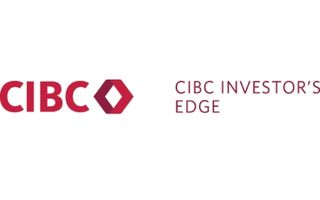Black & Decker Professional 2 in 1 Handheld Steamer
Stanley Black-and-Decker is a tools & accessories business based in the US. Stanley Black-and-Decker stocks (SWK.US) are listed on the NYSE and all prices are listed in US Dollars. Its last market close was $204.82 – a decrease of 2.59% over the previous week. Stanley Black-and-Decker employs 56,000 staff and has a trailing 12-month revenue of around $17.2 billion.
How to buy shares in Stanley Black-and-Decker
- Compare share trading platforms. Use our comparison table to help you find a platform that fits you.
- Open your brokerage account. Complete an application with your details.
- Confirm your payment details. Fund your account.
- Research the stock. Find the stock by name or ticker symbol – SWK – and research it before deciding if it's a good investment for you.
- Purchase now or later. Buy your desired number of shares with a market order or use a limit order to delay your purchase until the stock reaches a desired price.
- Check in on your investment. Optimize your portfolio by tracking your stock.
Finder's Pick for
Free Trades

Finder's Pick for
Beginners

Finder's Pick for
Savvy Investors

Finder's Pick for
Mobile App

Is it a good time to buy Stanley Black-and-Decker stock?
The technical analysis gauge below displays real-time ratings for the timeframes you select. This is not a recommendation, however. It represents a technical analysis based on the most popular technical indicators: Moving Averages, Oscillators and Pivots. Finder might not concur and takes no responsibility.
How has Coronavirus impacted Stanley Black-and-Decker's stock price?
Since the stock market crash in March caused by coronavirus, Stanley Black-and-Decker's stock price has had significant positive movement.
Its last market close was $182.73, which is 13.48% up on its pre-crash value of $158.1 and 161.04% up on the lowest point reached during the March crash when the stocks fell as low as $70.
If you had bought $1,000 worth of Stanley Black-and-Decker stocks at the start of February 2020, those stocks would have been worth $448.03 at the bottom of the March crash, and if you held on to them, then as of the last market close they'd be worth $1,136.58.
Stanley Black-and-Decker stock price (NYSE: SWK)
Use our graph to track the performance of SWK stocks over time.
Stanley Black-and-Decker shares at a glance
- Key figures
Information last updated 2021-11-27.
| Latest market close | $182.73 |
|---|---|
| 52-week range | $165.79 - $223.34 |
| 50-day moving average | $184.08 |
| 200-day moving average | $195.37 |
| Wall St. target price | $217.13 |
| PE ratio | 16.5381 |
| Dividend yield | $2.89 (1.52%) |
| Earnings per share (TTM) | $11.05 |
Compare online trading platforms
Note: The dollar amounts in the table below are in Canadian dollars.
Online stock trading
Stanley Black-and-Decker price performance over time
Historical closes compared with the close of $182.73 from 2021-11-26
| 1 week (2021-11-23) | -3.57% |
|---|---|
| 1 month (2021-10-29) | 1.67% |
| 3 months (2021-08-30) | -6.23% |
| 6 months (2021-05-28) | -15.71% |
| 1 year (2020-11-30) | -0.86% |
|---|---|
| 2 years (2019-11-29) | 15.84% |
| 3 years (2018-11-30) | 39.65% |
| 5 years (2016-11-30) | 54.03% |
Is Stanley Black-and-Decker under- or over-valued?
Valuing Stanley Black-and-Decker stock is incredibly difficult, and any metric has to be viewed as part of a bigger picture of Stanley Black-and-Decker's overall performance. However, analysts commonly use some key metrics to help gauge the value of a stock.
Stanley Black-and-Decker's P/E ratio
Stanley Black-and-Decker's current share price divided by its per-share earnings (EPS) over a 12-month period gives a "trailing price/earnings ratio" of roughly 17x. In other words, Stanley Black-and-Decker shares trade at around 17x recent earnings.
That's relatively low compared to, say, the trailing 12-month P/E ratio for the NASDAQ 100 at the end of 2019 (27.29). The low P/E ratio could mean that investors are pessimistic about the outlook for the shares or simply that they're under-valued.
Stanley Black-and-Decker's PEG ratio
Stanley Black-and-Decker's "price/earnings-to-growth ratio" can be calculated by dividing its P/E ratio by its growth – to give 1.3679. A low ratio can be interpreted as meaning the shares offer better value, while a higher ratio can be interpreted as meaning the shares offer worse value.
The PEG ratio provides a broader view than just the P/E ratio, as it gives more insight into Stanley Black-and-Decker's future profitability. By accounting for growth, it could also help you if you're comparing the share prices of multiple high-growth companies.
Stanley Black-and-Decker's EBITDA
Stanley Black-and-Decker's EBITDA (earnings before interest, taxes, depreciation and amortisation) is $3.2 billion.
The EBITDA is a measure of a Stanley Black-and-Decker's overall financial performance and is widely used to measure a its profitability.
Stanley Black-and-Decker financials
| Revenue TTM | $17.2 billion |
|---|---|
| Operating margin TTM | 15.2% |
| Gross profit TTM | $5 billion |
| Return on assets TTM | 6.88% |
| Return on equity TTM | 16.84% |
| Profit margin | 10.65% |
| Book value | $64.81 |
| Market capitalisation | $29.8 billion |
TTM: trailing 12 months
Stanley Black-and-Decker's environmental, social and governance track record
Environmental, social and governance (known as ESG) criteria are a set of three factors used to measure the sustainability and social impact of companies like Stanley Black-and-Decker.
When it comes to ESG scores, lower is better, and lower scores are generally associated with lower risk for would-be investors.
Stanley Black-and-Decker's total ESG risk score
Total ESG risk: 28.87
Socially conscious investors use ESG scores to screen how an investment aligns with their worldview, and Stanley Black-and-Decker's overall score of 28.87 (as at 01/01/2019) is pretty weak – landing it in it in the 64th percentile of companies rated in the same sector.
ESG scores are increasingly used to estimate the level of risk a company like Stanley Black-and-Decker is exposed to within the areas of "environmental" (carbon footprint, resource use etc.), "social" (health and safety, human rights etc.), and "governance" (anti-corruption, tax transparency etc.).
Stanley Black-and-Decker's environmental score
Environmental score: 3.28/100
Stanley Black-and-Decker's social score
Social score: 14.54/100
Stanley Black-and-Decker's governance score
Governance score: 6.05/100
Stanley Black-and-Decker's controversy score
Controversy score: 1/5
ESG scores also evaluate any incidences of controversy that a company has been involved in. Stanley Black-and-Decker scored a 1 out of 5 for controversy – the highest score possible, reflecting that Stanley Black-and-Decker has managed to keep its nose clean.
Stanley Black-and-Decker share dividends
Dividend payout ratio: 24.29% of net profits
Recently Stanley Black-and-Decker has paid out, on average, around 24.29% of net profits as dividends. That has enabled analysts to estimate a "forward annual dividend yield" of 1.73% of the current stock value. This means that over a year, based on recent payouts (which are sadly no guarantee of future payouts), Stanley Black-and-Decker shareholders could enjoy a 1.73% return on their shares, in the form of dividend payments. In Stanley Black-and-Decker's case, that would currently equate to about $2.89 per share.
While Stanley Black-and-Decker's payout ratio might seem low, this can signify that Stanley Black-and-Decker is investing more in its future growth.
Stanley Black-and-Decker's most recent dividend payout was on 21 December 2021. The latest dividend was paid out to all shareholders who bought their shares by 30 November 2021 (the "ex-dividend date").
Have Stanley Black-and-Decker's shares ever split?
Stanley Black-and-Decker's shares were split on a 2:1 basis on 4 June 1996. So if you had owned 1 share the day before before the split, the next day you'd have owned 2 shares. This wouldn't directly have changed the overall worth of your Stanley Black-and-Decker shares – just the quantity. However, indirectly, the new 50% lower share price could have impacted the market appetite for Stanley Black-and-Decker shares which in turn could have impacted Stanley Black-and-Decker's share price.
Stanley Black-and-Decker share price volatility
Over the last 12 months, Stanley Black-and-Decker's shares have ranged in value from as little as $165.7913 up to $223.3426. A popular way to gauge a stock's volatility is its "beta".
Beta is a measure of a share's volatility in relation to the market. The market (NYSE average) beta is 1, while Stanley Black-and-Decker's is 1.3808. This would suggest that Stanley Black-and-Decker's shares are more volatile than the average for this exchange and represent, relatively-speaking, a higher risk (but potentially also market-beating returns).
Stanley Black-and-Decker overview
Stanley Black & Decker, Inc. engages in the tools and storage, industrial, and security businesses worldwide. Its Tools & Storage segment offers power tools and equipment, including professional products, such as professional grade corded and cordless electric power tools and equipment, and pneumatic tools and fasteners; and consumer products comprising corded and cordless electric power tools primarily under the BLACK+DECKER brand, as well as lawn and garden products and related accessories, and home products. This segment sells its products through retailers, distributors, and a direct sales force to professional end users, distributors, retail consumers, and industrial customers in various industries. The company's Industrial segment provides engineered fastening systems and products to customers in the automotive, manufacturing, electronics, construction, aerospace, and other industries; sells and rents custom pipe handling, joint welding, and coating equipment for use in the construction of large and small diameter pipelines, as well as provides pipeline inspection services; and sells hydraulic tools, attachments, and accessories. This segment also serves oil and natural gas pipeline industry and other industrial customers. Its Security segment designs, supplies, and installs commercial electronic security systems and provides electronic security services; offers healthcare solutions, which include asset tracking, infant protection, pediatric protection, patient protection, wander management, fall management, and emergency call products; and sells automatic doors to commercial customers.
Stocks similar to Stanley Black-and-Decker
Frequently asked questions
Disclaimer: This information should not be interpreted as an endorsement of futures, stocks, ETFs, CFDs, options or any specific provider, service or offering. It should not be relied upon as investment advice or construed as providing recommendations of any kind. Futures, stocks, ETFs and options trading involves substantial risk of loss and therefore are not appropriate for all investors. Trading CFDs and forex on leverage comes with a higher risk of losing money rapidly. Past performance is not an indication of future results. Consider your own circumstances, and obtain your own advice, before making any trades.
More on investing
Jing Jun Ma is a tech and data expert with more than a decade of experience in digital marketing and programming. He wrangles data to make it useful for consumers facing a decision.
More guides on Finder
-
Top trending stocks on Twitter
We've pulled a list together of the top trending stocks being mentioned on Twitter over the past 24 hours.
Black & Decker Professional 2 in 1 Handheld Steamer
Source: https://www.finder.com/ca/buy-stanley-black-and-decker-stock
0 Response to "Black & Decker Professional 2 in 1 Handheld Steamer"
Post a Comment